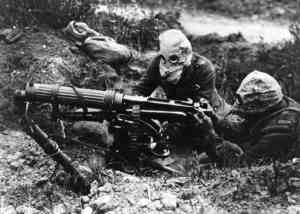Two days ago, I posted some thoughts about how to judge this week’s deal between Iran and a coalition of great (and some maybe not so great) powers. One of the important questions I said needed to be answered involved something that virtually none of the popular criticism of the deal has mentioned: the coalition of large economies that had been leading the sanctions regime alongside the United States. Especially for the hawkish end of the critic spectrum, the argument seems to boil down to “well, the US should’ve done more.”—more sanctions, more chest-thumping, more apocalyptic language, more…well, something equated with “tough,” unilateral (I guess) action.[1] Keeping in mind that “more” is pretty ambiguous here (just to be clear, “more tough stuff” isn’t exactly a policy alternative), let’s take these criticisms at face value. Could the US have been tougher on Iran? I’m going to argue that the answer is “maybe not,” and, further, that the current level of “tough” might still be a better option than the US trying to do “more” without the support of the coalition.
The key, as I see it, is the centrality of that great power coalition, the P5+1, in actually applying coercive leverage to Iran. In my forthcoming book, The Politics of Military Coalitions, I build and test some theories about just how countries build coalitions, what it takes to keep them together, and what they mean for coercive diplomacy. I’ll draw on some insights, especially from Chapter 4, to argue that, even when some partners force you to “water down” your threats, you might still be better off that way than doing something on your own would be even less effective.
The short version of the argument the P5+1 coalition goes something like this:
- The US can’t pressure Iran effectively unless other big countries impose sanctions, too. Otherwise, Iran can just buy stuff from/sell stuff to the other big economies. So, just like the US couldn’t invade Iran without the cooperation of nearby countries, it can’t cripple Iran economically by itself, either.[2]
- So, if Iran is to be made uncomfortable in pursuing nuclear weapons and thus tempted to give up materials and allow inspections, the US has to keep the coalition together.
- Keeping the coalition together means adjusting strategies to account for the fact that Russia, China, and the European partners can’t keep with the sanctions for as long as the United States can (economically or politically). In other words, to successfully deal with Iran, the US has to first deal with its own coalition partners, because it can’t achieve the kind of leverage it wants and needs on its own.
- So, if a state can’t go it alone at an acceptable price, sometimes it has to sacrifice the pie-in-the-sky really “tough” strategy for a less-tough one in order to keep the source of its leverage (the coalition) in place. Nonetheless, if it’s practically impossible to be as tough as one wants to be when going it alone, then the watered-down threats coming from the coalition are still better than the next best alternative.
All of this, of course, is built around the idea that the P5+1 coalition is central to the strategy of sanctioning Iran for pursuing nuclear weapons—and given the nature of sanctions, trade, and the global economy, I think that’s eminently reasonable. (It also assumes that a full-scale war is unattractive, which—bluster aside—even most hawks acknowledge.) If the US doesn’t keep the coalition together, say by delaying a deal and allowing some partners to reach the breaking point at which they opt out (which may be quite close), then it ends up with no more leverage over Iran and nothing to show for all the work in these last nine or so years since the P5+1 really got going. Keeping the coalition together does sometimes require showing more restraint than coalition leaders like, but if coalition partners are that critical for the leverage in the first place, there really isn’t a “more tough stuff” option out there. Again, it all comes down to choosing the right basis for comparison: an a unilateral sanctions regime is probably not the most effective option out there.
In other words, hopes and wishes aside, sometimes “more tough” just isn’t on the table without being tremendously counterproductive. Even when coalition partners are skittish, difficult, inconsistent, and miserly, they’re oftentimes worth the compromise.
[1] Sure, some of this comes from hawks who want more “tough” because, well, they’re hawks and that’s what they do: talk tough. Those are minds I won’t change. I’m fine with that.
[2] This, of course, sets aside the idea that the best way to make a country want nukes to defend itself is to give it a reason to want to defend itself—like attacking it.


